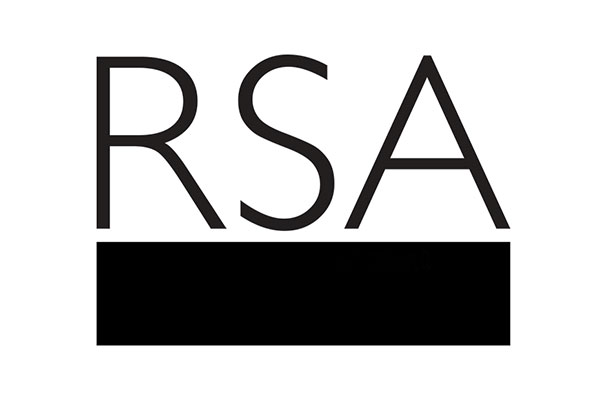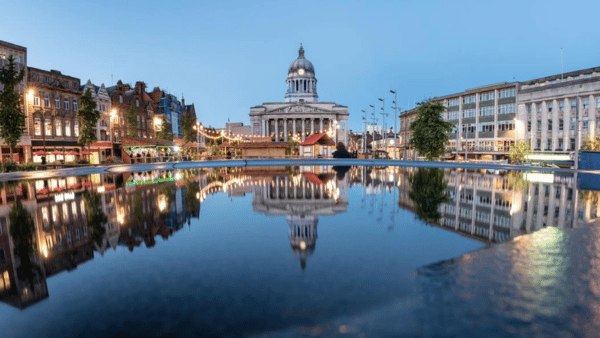Six young designers have won an RSA Design Directions award for a series of stamps exploring issues of renewable energy and global warming.
'Design Directions' is the RSA’s annual design awards in which students are challenged to address intractable social problems through innovative new design. The winning entries include:
, University College for the Creative Arts, Epsom, won a Royal Mail Award of £850 to support a 4 week internship at Pentagram.
Her series of six stamps exposes the negative side of nuclear and non-renewable energy in order to draw attention to the plight of global warming and environmental issues. Designed to provoke people to think for themselves about how they influence these results with their own actions, Alicia determined that it would be more effective to show consumers what the results of non-renewable energy would be rather than hope that they might have an active interest in alternative energy sources. Alicia chose deliberately not to repel the viewer with overtly shocking imagery, opting rather for images that reveal their meaning on careful examination, using a skull motif. So, penguins sit on a diminishing land mass depicted as the top of a skull rising above the water; a house and power station emit skull smoke from their chimneys; a ship leaks skulls into the water; fish emit skull bubbles after taking in toxic waste dumped at sea; and an aeroplane releases a skull trail into the sky, killing the plants below.
, Birmingham City University, won a Royal Mail Award of £2,500.
Courtney’s stamp designs feature universally recognisable symbols and icons. He has merged these with alternative energy sources, aiming to indicate to the public the benefits of alternative energy sources. The stamps all depict power sources related to the home - battery bars, a thermostat, a plug socket, a power on button, light from a bulb and a thermometer. Each of these is coupled with the alternative energy source that would power it. The alternative energy sources include a water turbine, bio fuel, wind power, solar power, geothermal power and wave power. The vibrant colours proposed for the stamps are designed to represent hope and problem solving action.
Kevin Daly, University of Plymouth won the De La Rue Travel Award of £900.
Kevin’s proposal focused on reducing the amount of energy consumption used in the process of creating his stamps, whilst applying the Hanover Principles of sustainable design to the stamps themselves, using a letterpress technique and process. The letterpress was powered by hand and he limited the use of computers, using one only to print the stamp template in light grey ink in order to conserve ink and reduce the amount of ink printed. He edited the Principles to give six messages for the six stamps, ‘eliminate the concept of waste’, ‘create objects of long term value’, ‘treat nature as a model and mentor’, ‘accept the consequences of design’, ‘understand the limitations of design’, and ‘rely on natural energy flows’. Before arriving at his final white on white design, Kevin looked at scratching the text onto the stamp, halving the stamp’s size in order to use less adhesive, and making a tiny stamp thus reducing consumption as much as possible – less adhesive, less paper, less ink.
Kayleigh Smith, Lincoln School of Art & Design, University of Lincoln, won a Royal Mail Award of £850 to support a 4 week internship at Pentagram.
Pushing the boundaries of traditional stamp design, Kayleigh proposed readjusting their length and dividing the design into two halves. The smaller section shows, as usual, on the front of an envelope, whilst the longer portion acts as a partial seal, running over the top and down the back, forcing the sender and receiver to interact with it and read the message. Her concept incorporates a ‘PS’ motif, linking with the idea of writing a letter and this she developed as a way of branding the stamps ‘Problem Solved’, with each one featuring a problem followed by a solution involving alternative energy. Her images, taken from the NASA website, places them on a coloured background with reversed out body text in Frugal Sans, to communicate the message. For example, an image titled ‘The strong currents of the Indonesian sea’ accompanies the text ‘petroleum and natural gas will run out within 50 years. Wave power is the world’s most untapped and concentrated form of energy available’.
Lynessa Hancock, University College Falmouth won a Royal Mail Award of £2,500.
After researching alternative energies, Lynessa decided to focus on the home. She considered how stamps could be reusable and, inspired by the versatility of post-it notes, designed a stamp that included a sticker to peel off and apply to various household appliances as a reminder to switch them off, and help change people’s bad habits in relation to energy waste.
As well as the message, she included images that indicate appliances, such as a cursor, battery, light bulb, washing symbol and TV button. She has used a sans serif typeface for legibility, and written the messages in a flirty style to make them more engaging. The stamps are each two colours, one for the top half and one for the bottom sticker half, thus adding interest and differentiating the sticker, indicated by a printed, turned down corner. The colours are bright and cheerful, hosting messages such as ‘Finished with me?’, ‘Turn me down!’, ‘Do you still want me?’, ‘Do you need me?’, ‘Don’t leave me’, and ‘Is it just me?’
Sam Bestwick, University College Falmouth won a Royal Mail Award of £850 to support a 4 week internship at Lewis Moberly.
Through his research, Sam found graphs that highlighted contrasts between renewable and non-renewable energy consumption, as well as patterns in their use over the last few decades. He began exploring the different visual forms of the graphs using colour to distinguish one area from another. He decided to use linear graphs to address the many situations involved in the global energy crisis, using colour and composition to create eye-catching images. Design development led him to incorporate the graphs in illustrations related to issues such as oil consumption (patch of oil), renewable energy prices (part of a leaf), bird and animal species (a feather), carbon emissions (chimney smoke), sea ice (cliff edge) and sea levels (a wave). The graph edges lie over the image so that, for example, the leaf edge will form the graph line showing a decline in renewable energy prices, or chimney smoke a rise in carbon emissions. A presentation booklet containing short descriptions of what each image represents enables the viewer to understand the extent of the issue.
Download the full press release containing winning designs (PDF, 393KB)
View gallery of winning entries for RSA Design Directions 2008-09
Related news
-
Andy Haldane, CEO of the RSA, calls for ‘social connection revolution’ to reverse economic and social decline
RSA CEO Andy Haldane delivered his annual Chief Executive’s Lecture to a sold-out audience at RSA House.
-
New Designers join Quentin Blake, Zandra Rhodes, and Tim Berners-Lee as Royal Designers for Industry
Three groundbreaking designers became Royal Designers for Industry in 2024. Four honorary Royal Designers for Industry from across the world have also been inducted.
-
Groundbreaking commission to supercharge East Midlands launched
The RSA and the East Midlands Combined County Authority have launched the Inclusive Growth Commission, which will identify and action radical plans to unleash potential and supercharge prosperity in communities across the East Midlands.


Be the first to write a comment
Comments
Please login to post a comment or reply
Don't have an account? Click here to register.